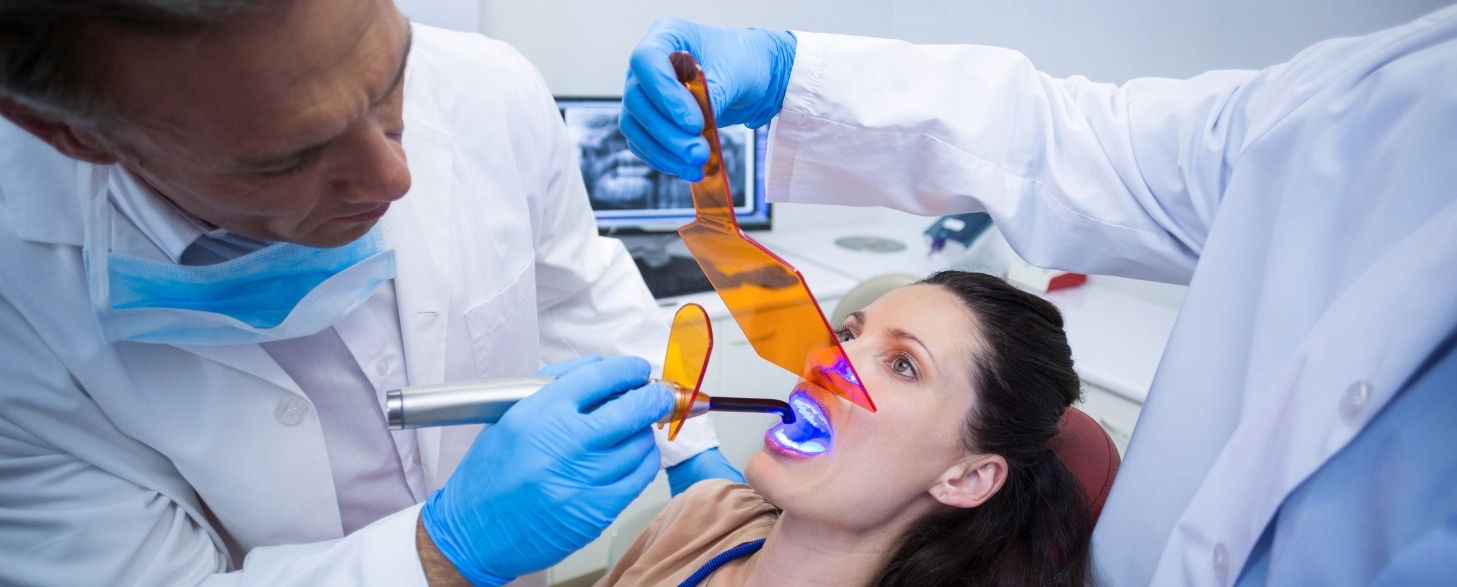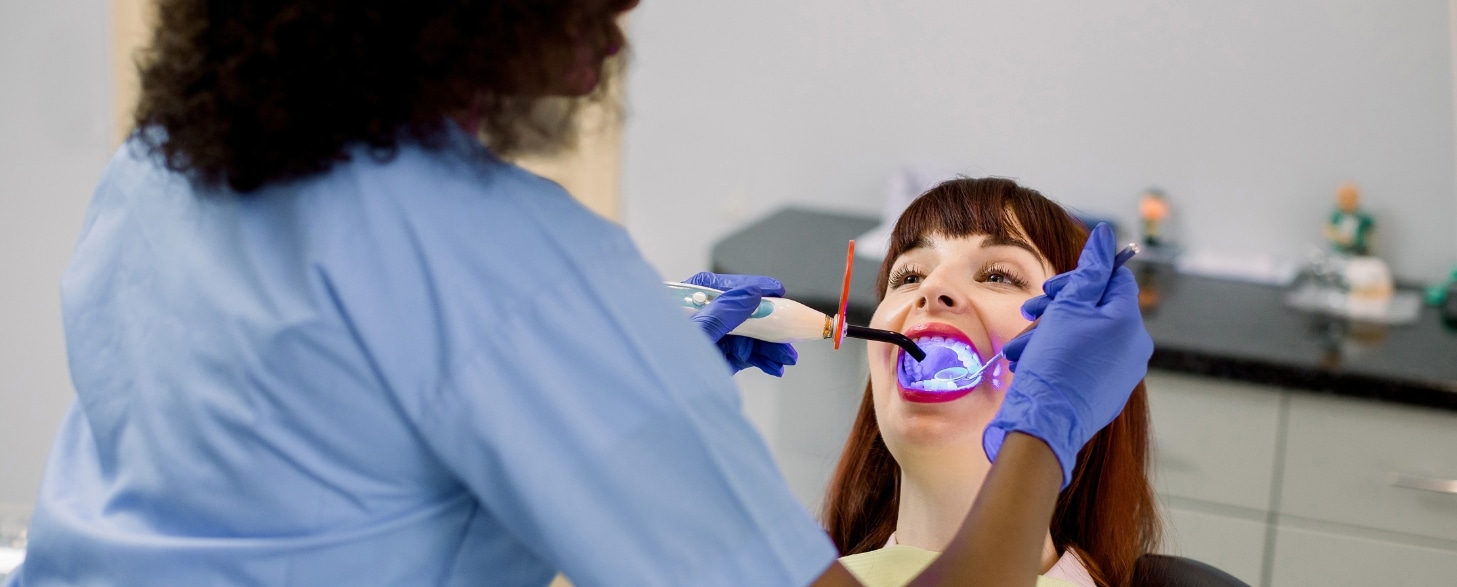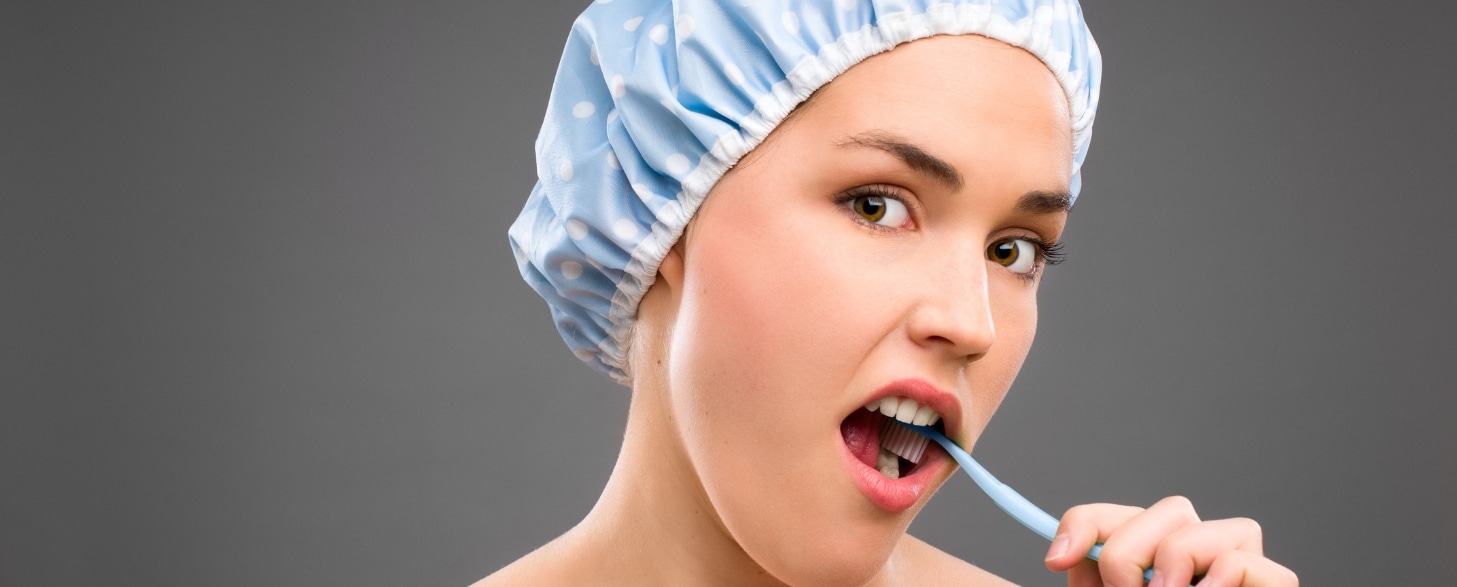How Often Can You Whiten Your Teeth?
San Antonio, TX

You’ve caught yourself scrolling through social media again, haven’t you? Bombarded by blindingly white smiles that could rival a freshly fallen snowdrift. Suddenly, your morning coffee looks suspiciously like mud, and your teeth feel more like dingy piano keys than pearly whites. The urge to whiten is real, but a nagging question pops into your head “Can I bleach my teeth into oblivion, or is there a limit to this sparkly madness?” This is why today we’re about to crack the code on safe teeth whitening. So, get ready to ditch the dull and showcase your inner megawatt grin (without turning your teeth into neon signs, of course)!
When it comes to teeth whitening, there are a plethora of options available. But among them, a crucial question often arises- how often can you safely whiten your teeth? The answer, like many things in life, depends on a delicate balance. Teeth whitening frequency utilizes bleaching agents, such as hydrogen peroxide or carbamide peroxide, to break down stains and discoloration on the enamel surface. These treatments can be performed in a white treatment schedule or at home using over-the-counter whitening kits.
Unveiling the Science of Whiten Your Teeth
Teeth whitening works by utilizing bleaching agents, typically hydrogen peroxide or carbamide peroxide. These agents break down stain molecules on the surface of your tooth enamel, revealing the whiter dentin layer beneath. However, it’s important to understand that enamel is a porous material. While effective for removing stains, whitening can also leave your teeth temporarily more vulnerable to new stains and sensitivity.
A Guide To Whitening Methods
There’s no one-size-fits-all approach to teeth whitening. Here’s a breakdown of the most common methods, along with their ideal frequency for safe and effective whitening:
- In-Office Whitening: Performed by a dentist, this method utilizes professional-grade bleaching agents that deliver the fastest and most dramatic results. However, due to the potent bleaching agents used, in-office teeth whitening is typically recommended once a year or every 18 months to minimize the risk of tooth sensitivity.
- At-Home Whitening Kits: These kits offer a convenient whitening option from the comfort of your home. They typically contain whitening strips, trays, or gels with lower-concentration bleaching agents compared to in-office treatments. The frequency of use varies depending on the specific product but generally falls within the range of once a day for two weeks to every other day for a few weeks. Always follow the manufacturer’s instructions and consult your dentist before starting any at-home whitening regimen.
- Whitening Toothpaste: This toothpaste contains mild abrasives and low-level bleaching agents to remove surface stains and provide a slight brightening effect. However, the impact is subtle and wouldn’t be considered a true “whitening” treatment. Whitening toothpaste can be used regularly as part of your daily oral hygiene routine, but it won’t deliver dramatic results in a short period.
- Whitening Rinses and Pencils: These offer a convenient on-the-go solution for a small brightening boost. They typically contain low-concentration bleaching agents and are best suited for occasional use or touch-ups, rather than achieving significant whitening effects.
Factors Influencing Your Whitening Frequency
- Starting Shade: If your teeth are naturally quite white, you might not need frequent whitening treatments. Conversely, if your teeth have significant staining, you might require more frequent treatments initially, followed by a maintenance schedule.
- Sensitivity: Some individuals experience tooth sensitivity after whitening, particularly with in-office procedures and higher-concentration at-home kits. If you experience sensitivity, you might need to adjust your whitening schedule or opt for a gentler approach.
- Lifestyle Habits: Smoking, drinking coffee, tea, or red wine can all stain your teeth. If you engage in these habits, you might need more frequent touch-up treatments to maintain your desired whiteness.
Essential Considerations for Maintaining Whitened Teeth
- Practice Good Oral Hygiene: Brush your teeth twice a day, floss daily, and use an antiseptic mouthwash to prevent plaque buildup and maintain oral health.
- Limit Staining Foods and Beverages: Minimize consumption of foods and drinks that can stain your teeth, or rinse your mouth with water after consuming them to reduce the risk of discoloration.
- Quit Smoking: Smoking not only stains teeth but also increases the risk of gum disease and oral cancer. Quitting smoking can improve the appearance and health of your smile.
- Use Whitening Toothpaste: Incorporate whitening toothpaste into your oral hygiene routine to help remove surface stains and maintain the brightness of your teeth between whitening treatments.
Risks of Over-Whitening
- Tooth Sensitivity: Overuse of whitening products can lead to increased tooth sensitivity, causing discomfort when consuming hot or cold foods and beverages.
- Gum Irritation: Excessive whitening treatments can irritate the gums and soft tissues of the mouth, leading to inflammation and discomfort.
- Enamel Damage: Aggressive whitening treatments or frequent use of high-concentration bleaching agents can weaken tooth enamel, increasing the risk of tooth decay and other dental problems.
Striking the Perfect Balance: A Safe and Sustainable Whitening Routine
Here are some key takeaways to ensure you achieve a bright smile without compromising your oral health:
- Consult Your Dentist: Before embarking on any whitening regimen, discuss your options with your dentist. They can assess your individual needs, recommend the best approach based on your dental health, and monitor your progress.
- Start Gentle: If you’re new to whitening, it’s advisable to begin with a gentler method like whitening toothpaste or a low-concentration at-home kit. You can gradually increase the intensity if necessary.
- Listen to Your Teeth: Pay attention to any sensitivity you might experience. If discomfort arises, reduce the frequency of whitening or stop the treatment altogether and consult your dentist.
- Maintenance is Key: To maintain your brightened smile, schedule regular dental cleanings and consider periodic touch-up whitening treatments depending on your chosen method.
To conclude, Teeth whitening can be a safe and effective way to boost your confidence and achieve a radiant smile. By understanding how often to whiten teeth, the science behind the process, selecting the appropriate method in consultation with your dentist, and maintaining a healthy oral hygiene routine, you can strike the perfect balance between achieving your desired whiteness and ensuring the health of your teeth.






